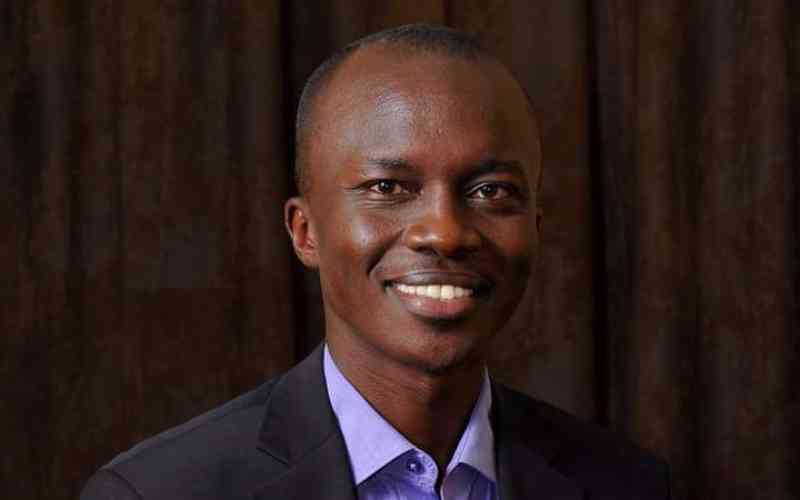
NAIROBI: In 2015, Kenya transitioned from a largely free-to-air TV into a pay-to-watch regime when analogue signals were switched off.
While today the uptake of digital signals by consumers is on the rise, at the time when it was implemented, a big number of Kenyans were denied access to information as they readied resources to buy decoders or pay subscription fees.
But the reality is that there is more variety provided by new stations and local languages are now being televised.
Experts say an informed public is more likely to contribute to the economic development process in any society than an ignorant public.
Today, broadcasters have an opportunity to bring on board audiences previously marginalised on language and signal distribution like Northern Kenya counties.
Kenya Editors Guild Chairman Linus Kaikai says the initial infrastructure has followed the railway line laid by colonialists, leaving many Kenyans on the wrong side of the information divide.
“All Kenyans need to be included to access TV broadcasting, including marginalised counties,” he says.
The single-most important change with digital migration was that you either have a TV fitted with a digital tuner or you buy a special decoder known as a Set-Top Box to connect to your existing analogue TV, in order to continue watching television.
What this meant is that people who had been receiving TV signals for free had to invest in the decoders and pay a price to receive through set-top boxes or subscriber TV models like GOTv, Azam TV, Zuku and DSTV among others.
In 2015, the digital migration marked a major shift in the terrain because viewers would have to pay monthly for TV news and programming unlike before, unless they acquire the free-to-air set top boxes, which then carry the channels that do not charge.
TRANSITIONAL DRAMA
Since the advent of television services in Kenya in the early 1960s, majority of the Kenyan population have consumed and enjoyed free TV services.
In December 2012, against protestations by the Media Owners, the Communications Authority of Kenya (CA) announced the analogue switch-off date of December 31, 2013.
Subsequently, three media houses (Royal Media Services, Nation Media Group and the Standard Group) filed a suit at the High Court seeking to stop the analogue switch-off on the proposed date.
Stay informed. Subscribe to our newsletter
This was a desperate move made by the local media houses to protect their business investments and to move CA and the Ministry for Information and Communication to protect the Free To Air TV and access of Free To Air Channels to Kenyans.
In early 2015, Kenyans were treated to transitional drama from analogue to digital broadcasting amid protests from local channels.
Digital broadcasting is a best practice that no modern media house can ignore in the wake technological revolution. Local Free to Air broadcasters (KTN, NTV and Citizen TV) protested only the manner in which the process was rushed by the Ministry of Information.
COURT BATTLES
When the media houses went off air after a series of court battles, what followed was blackouts and a major drop in revenues by the three TV stations as advertising and programming was disrupted.
Viewers who accessed content from these channels were denied access to information, education and entertainment.
On the flip side, there are many advantages that have come with the switch to digital signals. There is better quality picture sharper, brighter picture and reduced interference.
Viewers also enjoy improved sound quality.
High Definition Television is the premium version of digital television, offering picture and sound quality, which is much better than today’s analog television.
There is variety for viewers and with it comes more access from people who have acquired set top boxes.
Kenyans today have over 50 channels, some broadcasting in vernacular and filling gaps previously ignored by commercial broadcasters. From Njata TV to Inooro and Lolwe TV, there are several in the works.
Furthermore, digital signal carry much more data than analogue signals.
Where there was one analogue frequency, digital ones can be split into 20. Broadcasters can easily have a variety of channels like KTN and KTN News.
With the implementation of digital migration, TV service providers saw this as the golden opportunity to lock in new subscribers to their services.
 The Standard Group Plc is a
multi-media organization with investments in media platforms spanning newspaper
print operations, television, radio broadcasting, digital and online services. The
Standard Group is recognized as a leading multi-media house in Kenya with a key
influence in matters of national and international interest.
The Standard Group Plc is a
multi-media organization with investments in media platforms spanning newspaper
print operations, television, radio broadcasting, digital and online services. The
Standard Group is recognized as a leading multi-media house in Kenya with a key
influence in matters of national and international interest.
 The Standard Group Plc is a
multi-media organization with investments in media platforms spanning newspaper
print operations, television, radio broadcasting, digital and online services. The
Standard Group is recognized as a leading multi-media house in Kenya with a key
influence in matters of national and international interest.
The Standard Group Plc is a
multi-media organization with investments in media platforms spanning newspaper
print operations, television, radio broadcasting, digital and online services. The
Standard Group is recognized as a leading multi-media house in Kenya with a key
influence in matters of national and international interest.










